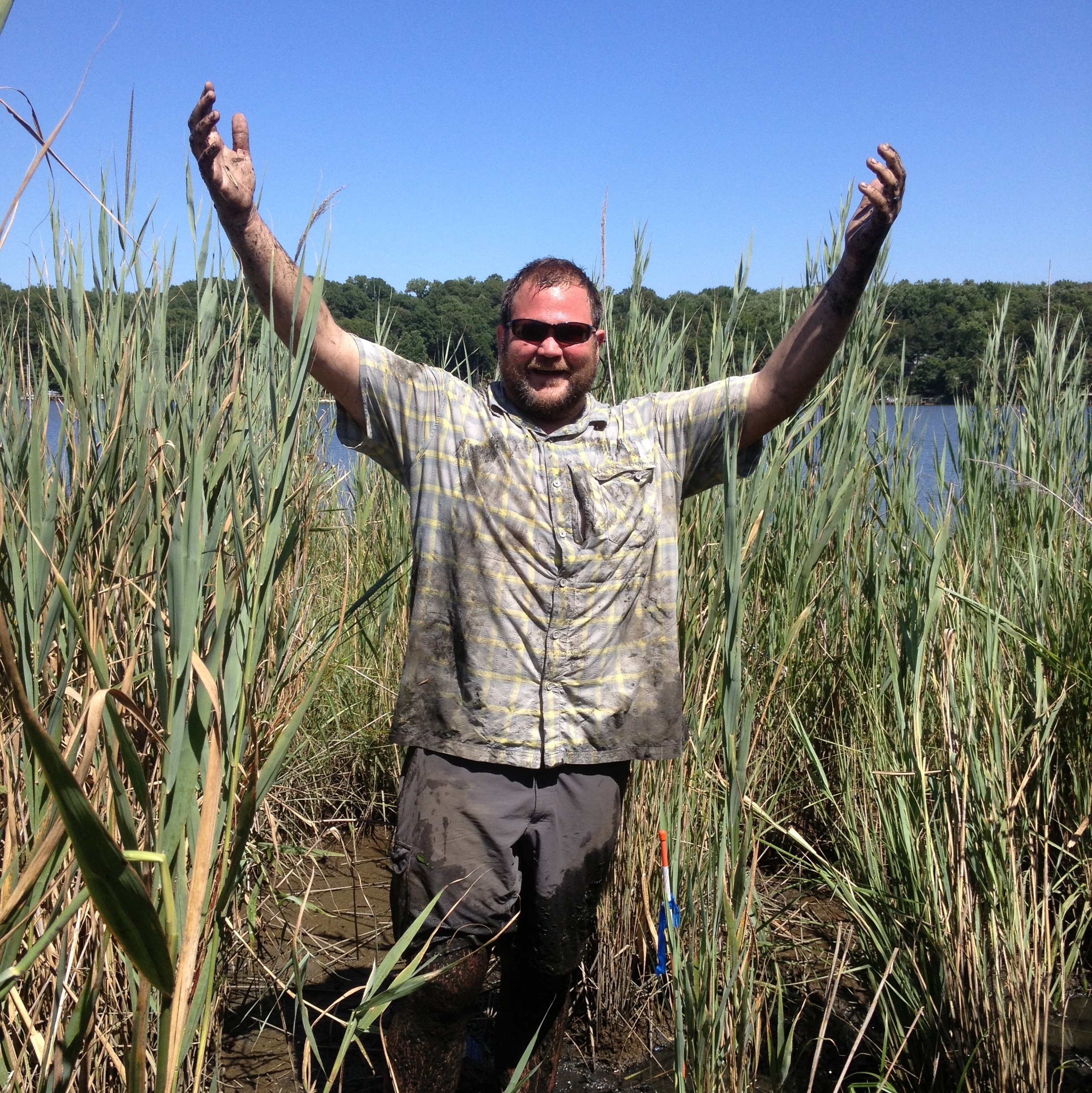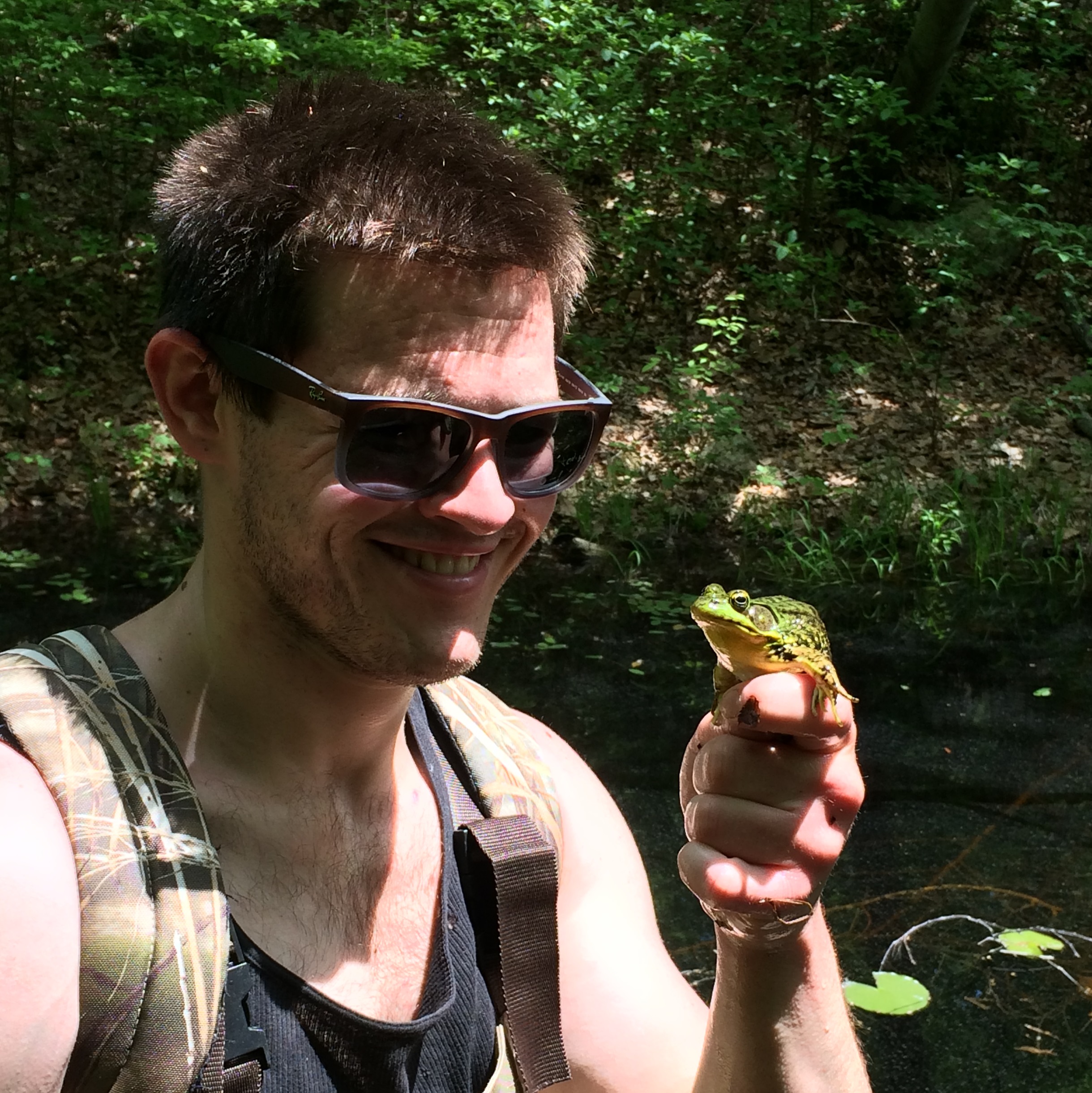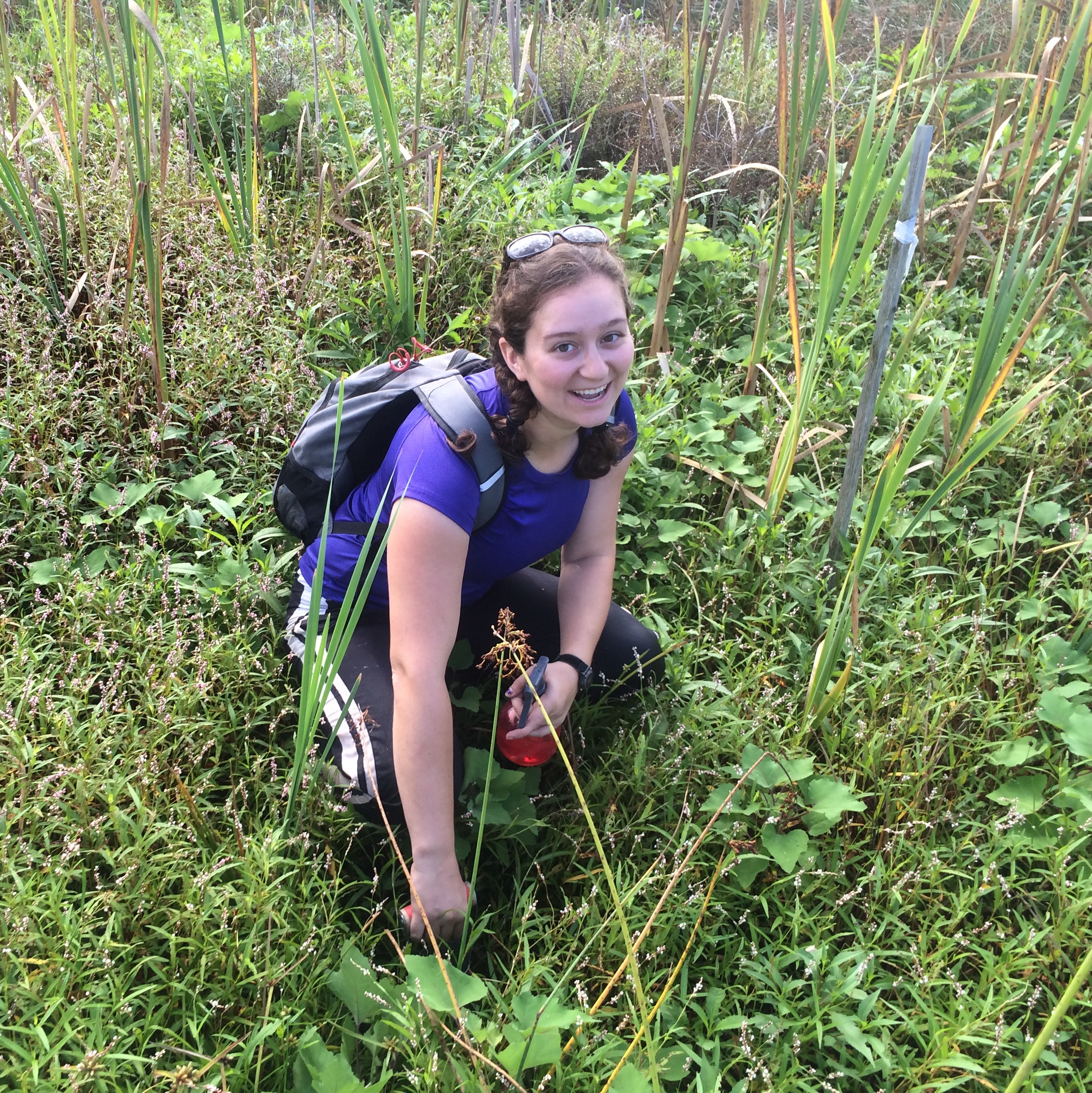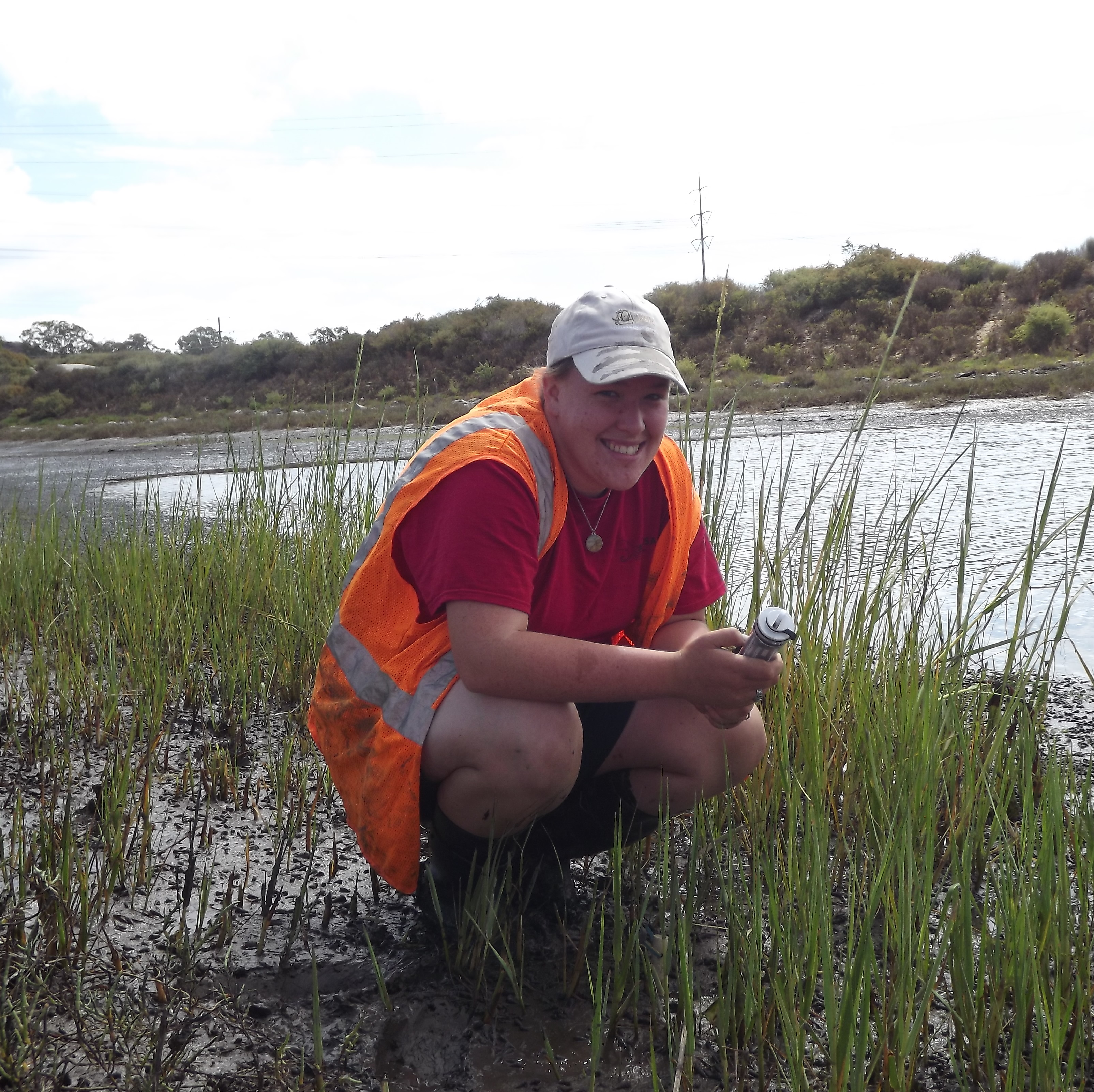GCA Coastal Wetlands Scholarship Award Recipients
Award Recipients in 2014

Eric Hazelton, a Ph.D. student at Utah State University, is conducting a large-scale removal of Phragmites australis in brackish marshes across nine Chesapeake Bay subwatersheds in order to determine how land use impacts restoration. He will compare nutrients, seedbank, and plant communities in 3 types of plots: where Phragmites is removed, where it is left intact, and native reference marshes. Additionally, he will use molecular techniques to track the success of individual Phragmites clones and reproduction. His results will help land managers focus their efforts and improve outcomes.
 Max Lambert, a Ph.D. student at Yale University, will study sex ratios (proportion of males and females) of spring peeper frog* babies in natural, forested wetlands as well as disturbed wetlands like suburban and agricultural ponds. Frog sex ratios are useful indicators of wetland health as well as contamination by human chemicals. The goal of his project is to understand how human land use and other environmental variables influence the reproductive health of wetland wildlife.
Max Lambert, a Ph.D. student at Yale University, will study sex ratios (proportion of males and females) of spring peeper frog* babies in natural, forested wetlands as well as disturbed wetlands like suburban and agricultural ponds. Frog sex ratios are useful indicators of wetland health as well as contamination by human chemicals. The goal of his project is to understand how human land use and other environmental variables influence the reproductive health of wetland wildlife.
* Target species changed to wood frog.
 Eliza McFarland, a Masters student at the University of Maryland, is studying wetland microbial communities (bacteria, archaea, fungi), which are essential in processing excess nitrogen-based nutrients, such as ammonium (NH4+) and nitrate (NO3-). Recently, there has been an increase in microbial community studies for wetland restoration success assessment. She is proposing a complete survey of denitrifying microbial characteristics (biomass, composition and activity) in restored and natural depressional wetlands, in conjunction with a completed vegetation and soil survey.
Eliza McFarland, a Masters student at the University of Maryland, is studying wetland microbial communities (bacteria, archaea, fungi), which are essential in processing excess nitrogen-based nutrients, such as ammonium (NH4+) and nitrate (NO3-). Recently, there has been an increase in microbial community studies for wetland restoration success assessment. She is proposing a complete survey of denitrifying microbial characteristics (biomass, composition and activity) in restored and natural depressional wetlands, in conjunction with a completed vegetation and soil survey.
 Shelby Rinehart, a Ph.D. student at San Diego State University, will conduct a series of experiments aimed at defining the interaction between the salt marsh lady beetle, scale insects, and smooth cordgrass. She will use field and laboratory experiments to assess the ability of lady beetles to control prey populations through an aggregative response, while also evaluating the ability of lady beetles to perceive volatile emissions (airborne chemicals) released by herbivore-attacked smooth cordgrass plants.
Shelby Rinehart, a Ph.D. student at San Diego State University, will conduct a series of experiments aimed at defining the interaction between the salt marsh lady beetle, scale insects, and smooth cordgrass. She will use field and laboratory experiments to assess the ability of lady beetles to control prey populations through an aggregative response, while also evaluating the ability of lady beetles to perceive volatile emissions (airborne chemicals) released by herbivore-attacked smooth cordgrass plants.
